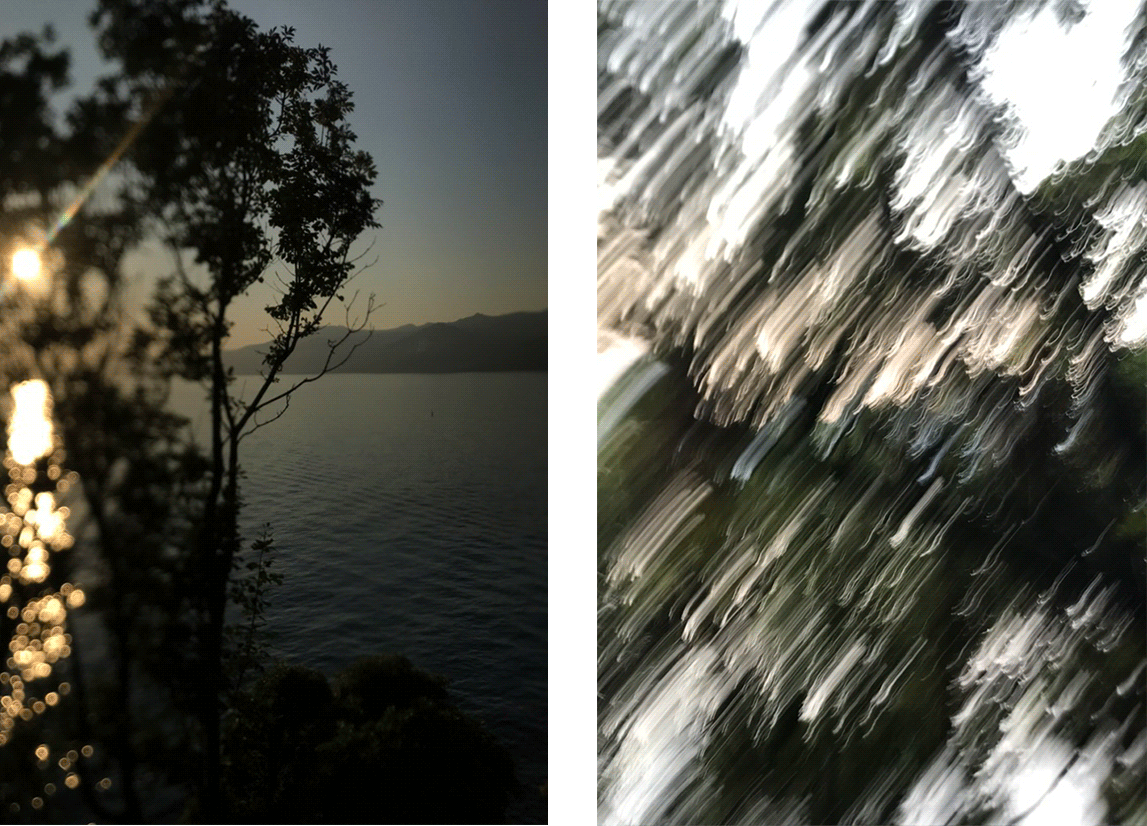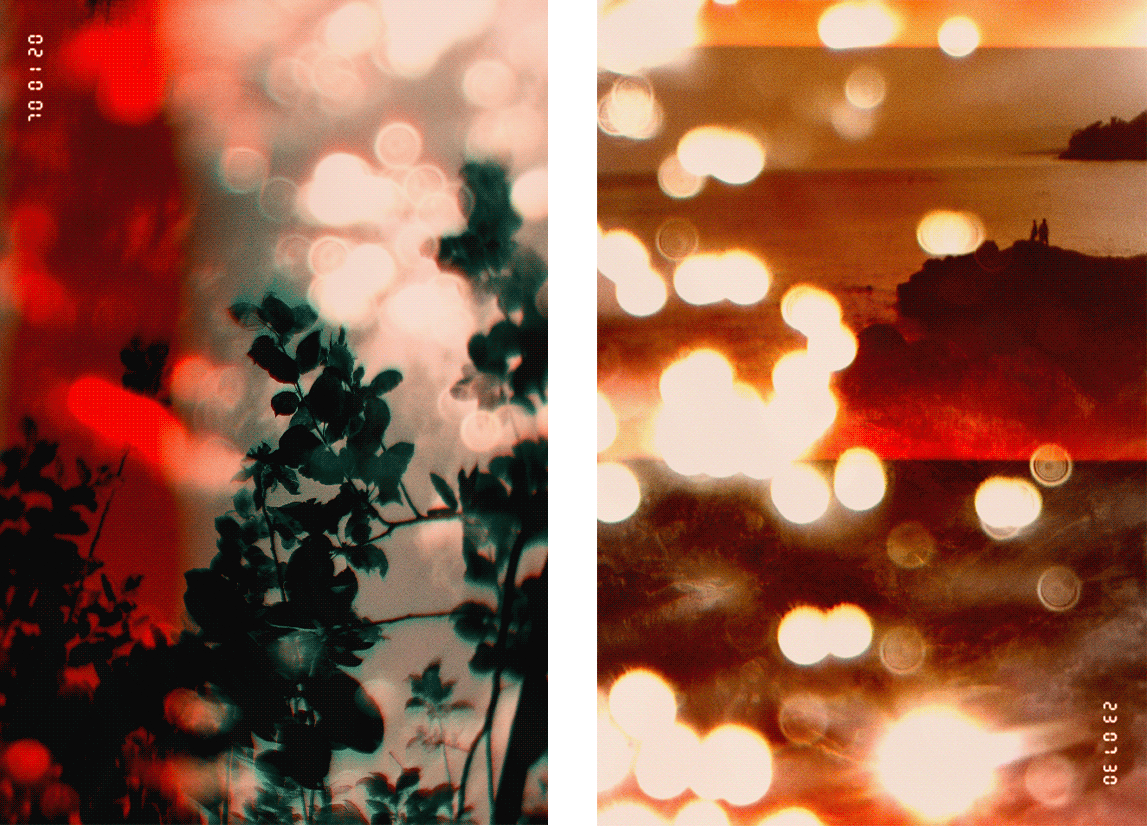«Diaries» is a generative art project by Simon De Mai. The series of 150 unique pieces is available to collect on Highlight platform. Please see the project page for details.
The camera
This project started with a broken camera. Over the summer, I spent a few months in a small house on the coast, immersed in nature. While I was there, the camera on my phone stopped working properly. The pictures were sometimes overexposed, distorted or out of focus. Intrigued by this optical effect, I started experimenting with the camera, taking pictures of plants and nature.

Photographing the sunlight became my pleasure and my obsession. The bright light reacted to the broken camera shutter and left traces of interesting textures on the sensor. Most of the time I'd come home not knowing what to expect from the pictures. It's a feeling I remember from developing film in the darkroom, where it's often hard to predict what the end result will be. This happy accident made me think about that feeling. I was fascinated by the unexpected distortions, and a generative series of photographs seemed like the ideal medium to explore that sense of surprise and discovery. A generator of happy accidents.

The digital darkroom
A digital darkroom, behind the scenes, is operated by a random algorithm that further processes the images, using a vocabulary of visual alterations borrowed from both the digital and analog worlds. When a new piece is minted, the original pictures are altered, fragmented, mixed, and distorted in unpredictable ways. Through this process, the images become more abstract, feeling at once surreal and familiar, universal and specific, very obvious and enigmatic. In a way, the visual qualities of the images evokes the elusive feeling of a distant memory. But does this collection of pictures have anything to do with the actual place where I took the pictures in the first place?

Photographers know that the darkroom is often as important as the act of photography itself. Two analog prints are never the same. As a source of infinite synthetic memories where the same source image offers multiple interpretations and emotional responses, this project is also a reflection on the role of image manipulation tools.
By cropping, editing, and filtering images with easy-to-use digital effects, are we imposing a fictional narrative on our memories? Was the sunlight really that warm and the sky that blue? It often seems we altering our own memories by manipulating our images, an explicit extension of how we filter our reality anyway.

A collective memory
The project will also include an accompanying text for each piece. Artificial intelligence has generated hundreds of imaginary travelogues with the prompt of describing a day spent on the coast. These fragments are drawn from our collective memory, which, like the images, are traces of something experienced by all of us and by no one in particular. These travelogues may look real, but when you look closer there's something off about them. It's interesting to explore that sense of ambiguity.
Of course our collective memory informs our personal experience more than we realize, but when this material is surfaced explicitly by AI, they feel otherworldly. It is also somewhat absurd and eerie when the AI algorithm describes physical sensations, such as feeling the warmth of the sun on the skin. The fictional story is part of the token and when visited in live view, the text is revealed by clicking on the image.
The work is presented in the format of a standard 35mm camera print (4×6 inches) with a date stamp on it that closely resembles the one impressed on vacation photos by cheap snapshot cameras. The date, in this case, is tied with the time in which the photo is minted, like a souvenir of the day when the memory was captured on the Ethereum blockchain.

Notes and credits
The font used on the project and distributed with the artwork is Meyrin, designed and released under the SIL Open Font License by Brian Suda in October 2014.
I would like to thank the Highlight team (Nathaniel, Duane, Will, Amy and Sarib) for their support and for helping me make this project a reality. Special thanks to Nathaniel and Duane for believing in this project from the beginning. Thanks also to Pixelpete and to all my artist friends who took the time to give their precious insights. Finally, M. without your encouragement and ideas, this project would never have been possible 🤍